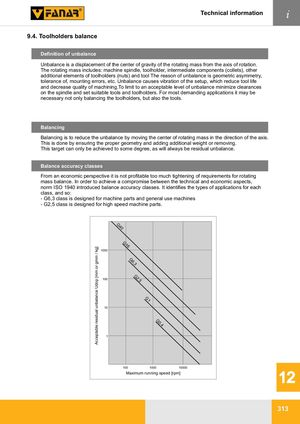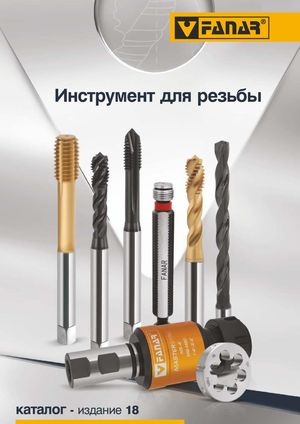Общий каталог FANAR 2021 - страница 316
Навигация

Technical information i 9.4. Toolholders balance Definition of unbalance Unbalance is a displacement of the center of gravity of the rotating mass from the axis of rotation. The rotating mass includes: machine spindle, toolholder, intermediate components (collets), other additional elements of toolholders (nuts) and tool The reason of unbalance is geometric asymmetry, tolerance of, mounting errors, etc. Unbalance causes vibration of the setup, which reduce tool life and decrease quality of machining.To limit to an acceptable level of unbalance minimize clearances on the spindle and set suitable tools and toolholders. For most demanding applications it may be necessary not only balancing the toolholders, but also the tools. Balancing Balancing is to reduce the unbalance by moving the center of rotating mass in the direction of the axis. This is done by ensuring the proper geometry and adding additional weight or removing. This target can only be achieved to some degree, as will always be residual unbalance. Balance accuracy classes From an economic perspective it is not profitable too much tightening of requirements for rotating mass balance. In order to achieve a compromise between the technical and economic aspects, norm ISO 1940 introduced balance accuracy classes. It identifies the types of applications for each class, and so: - G6,3 class is designed for machine parts and general use machines - G2,5 class is designed for high speed machine parts. G 40 G 16 1000 G 6,3 G 100 2,5 G 1 10 G0,4 1 100 1000 10000 Maximum running speed [rpm] 12 313 Acceptable residual unbalance Udop [mm or gmm / kg]
 Общий каталог FANAR 2018
Общий каталог FANAR 2018 Каталог FANAR цельные твердосплавные фрезы
Каталог FANAR цельные твердосплавные фрезы